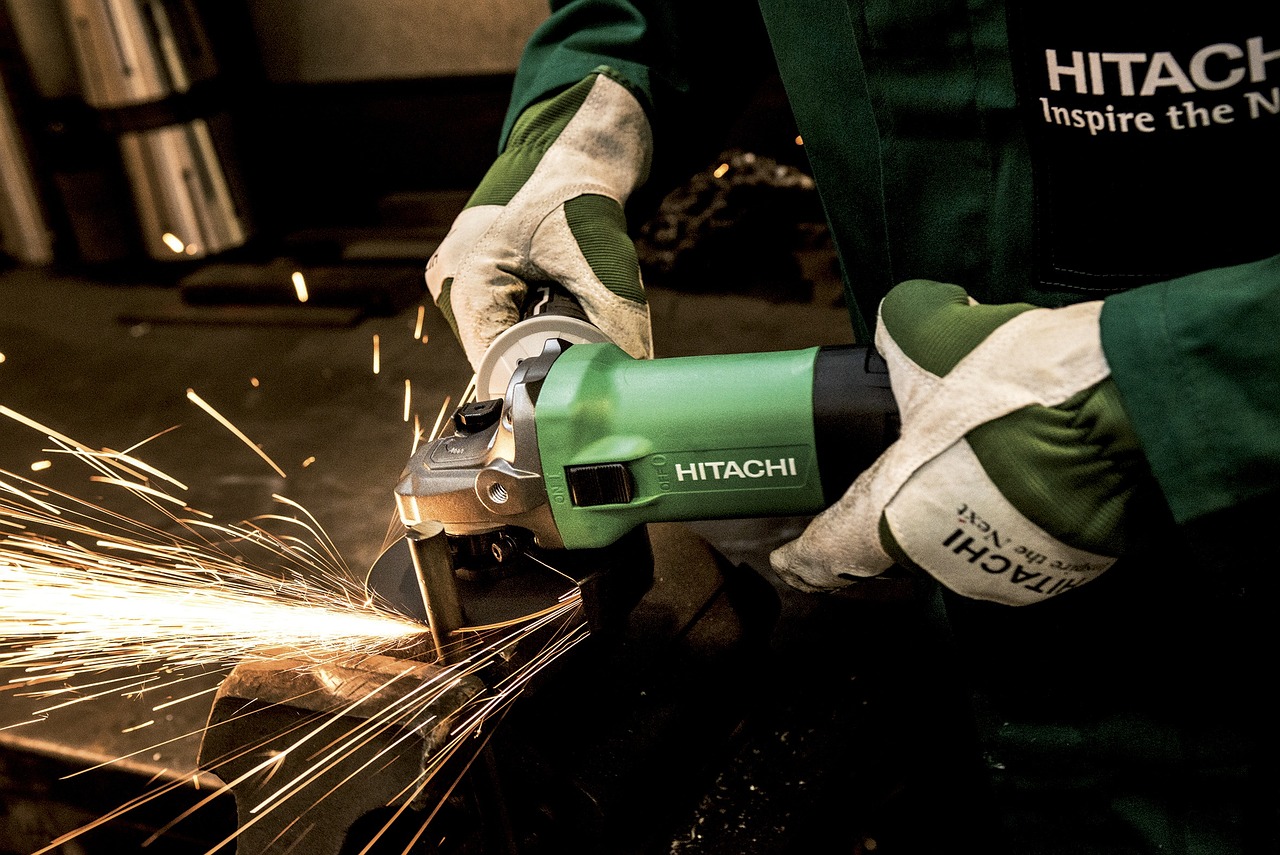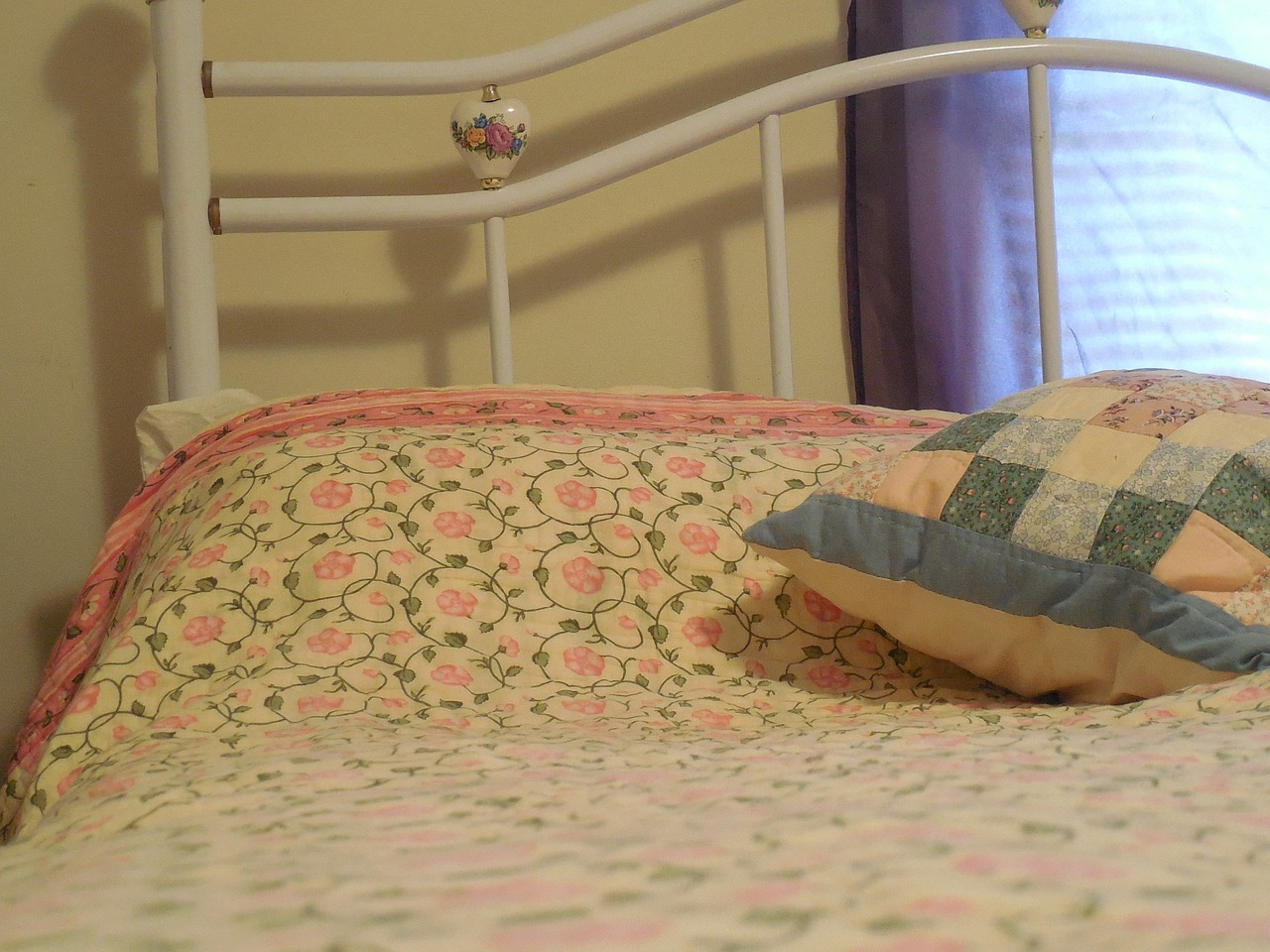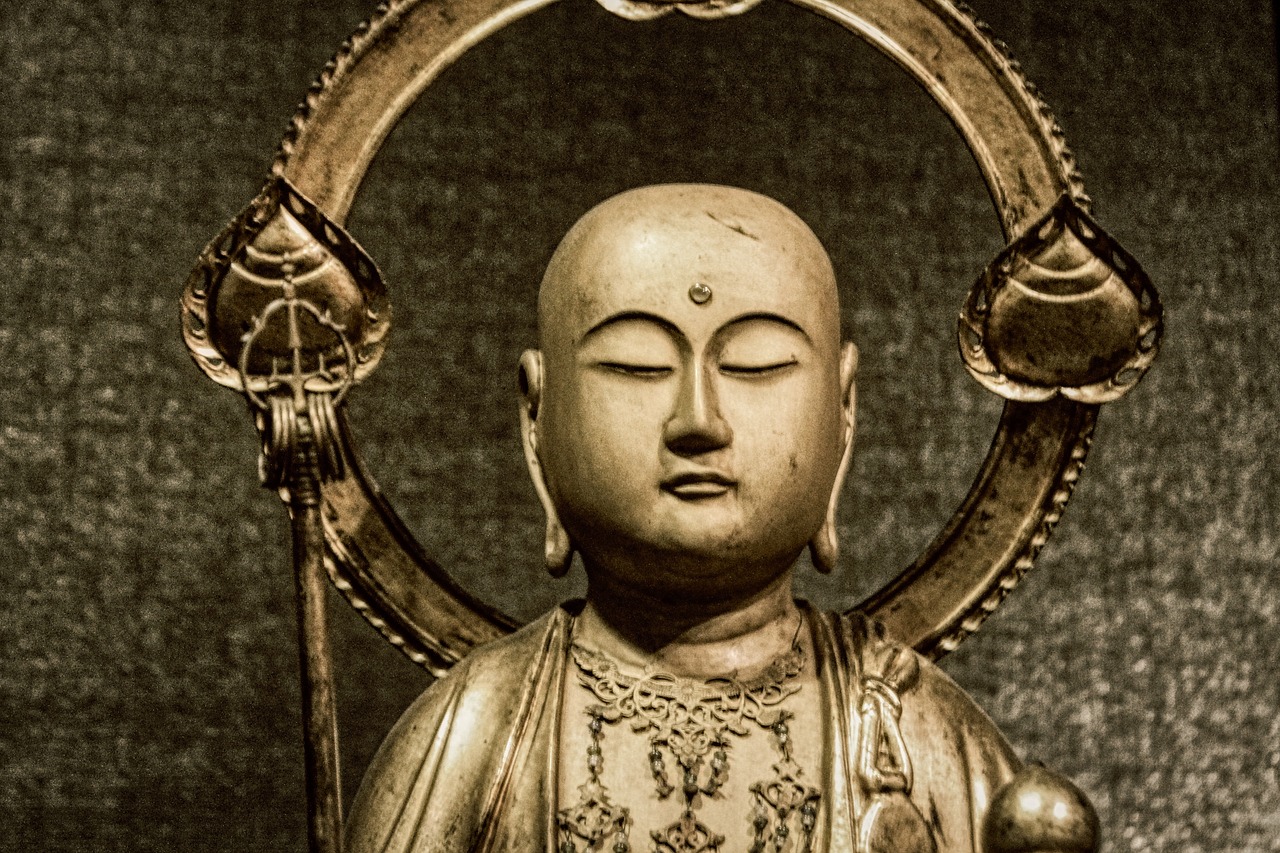Unwind with Mindful Quilting: Tips to Get Started
Are you feeling overwhelmed by the hustle and bustle of daily life? If so, you’re not alone! In today’s fast-paced world, finding a moment to breathe and relax can feel like searching for a needle in a haystack. That's where mindful quilting comes into play! This delightful craft not only allows you to express your creativity but also serves as a therapeutic outlet that can significantly reduce stress levels. Imagine the rhythmic sound of fabric being cut, the gentle hum of a sewing machine, and the vibrant colors of fabrics coming together to form something beautiful. It’s like a meditation session, but with a tangible outcome!
Mindful quilting encourages you to focus on the present moment, letting go of your worries as you immerse yourself in the process of creating. As you stitch together your quilt, you’ll find that your mind begins to quiet, allowing for a sense of peace to wash over you. It’s not just about the final product; it’s about enjoying each step of the journey. Whether you’re a seasoned quilter or just starting out, this practice can help you cultivate a deeper connection to your craft and yourself.
In this article, we’ll explore the many benefits of mindful quilting, essential tools and materials, and tips for creating a dedicated quilting space. We’ll also delve into how to incorporate mindfulness practices into your quilting sessions and the importance of connecting with a quilting community. By the end, you’ll be equipped with everything you need to embark on your quilting journey, enhancing your creativity while finding relaxation in every stitch.
So, grab your fabric and let’s dive into the world of mindful quilting! It’s time to unleash your creativity and discover the joy of crafting something uniquely yours.
Mindful quilting fosters relaxation and creativity, reducing stress while promoting focus. This section delves into how the practice can enhance mental well-being and provide a sense of accomplishment.
Before starting, it's crucial to gather the right tools. This section outlines the essential materials needed for quilting, ensuring a smooth and enjoyable experience for beginners.
Selecting an appropriate quilt pattern can be daunting. Here, we discuss how to choose beginner-friendly patterns that encourage creativity without overwhelming you.
Understanding fundamental techniques is essential for any quilter. This section introduces basic quilting methods that will help you create beautiful projects with confidence.
A dedicated space can enhance your quilting experience. This section offers tips on how to set up a calming and inspiring environment for your mindful quilting practice.
Mindfulness can be integrated into quilting. Here, we explore techniques to incorporate mindfulness practices, like meditation and breathing exercises, into your quilting sessions.
Connecting with others adds joy to quilting. This section discusses the benefits of joining quilting groups or online communities for support, inspiration, and shared experiences.
Quilting is a lifelong journey. This final section provides tips on how to continue growing your skills, exploring new techniques, and finding inspiration for future projects.
Q: What is mindful quilting?
A: Mindful quilting is the practice of engaging deeply in the quilting process, focusing on each step while allowing your mind to relax and let go of stress.
Q: Do I need to be an expert to start quilting?
A: Absolutely not! Quilting is for everyone, and there are plenty of beginner-friendly patterns to help you get started.
Q: What materials do I need to start quilting?
A: Basic materials include fabric, a rotary cutter, a cutting mat, quilting rulers, pins, and a sewing machine.
Q: How can I find a quilting community?
A: You can join local quilting groups, participate in online forums, or attend quilting workshops to connect with fellow enthusiasts.

The Benefits of Mindful Quilting
Mindful quilting is more than just a craft; it’s a journey into the depths of creativity and relaxation. Imagine sitting down with a vibrant array of fabrics, each piece telling its own story, as you stitch your way into a world of tranquility. This practice can significantly reduce stress levels and promote a sense of calmness in our fast-paced lives. But how exactly does quilting achieve this? Let’s dive into the therapeutic benefits that this engaging craft offers.
First and foremost, one of the most profound benefits of mindful quilting is its ability to foster relaxation. Engaging in repetitive motions, like cutting fabric or sewing seams, can be incredibly soothing. It’s akin to meditation—where your mind can wander freely while your hands are busy. This rhythmic activity allows you to enter a state of flow, where time seems to stand still, and your worries fade into the background. Think of it as a gentle escape from the chaos of daily life, where each stitch serves as a reminder to breathe and be present.
Moreover, mindful quilting encourages creativity. As you select colors and patterns, you’re not just making a quilt; you’re expressing yourself. This form of self-expression can be liberating, allowing your imagination to take flight. Whether you’re inspired by nature, a favorite memory, or even a dream, the quilt becomes a canvas for your thoughts and feelings. It’s like painting with fabric, where each piece contributes to a larger narrative. This creative outlet can lead to a sense of accomplishment as you see your ideas materialize into something tangible.
Additionally, the practice of quilting can enhance mental well-being. Engaging in a craft that requires focus can serve as a distraction from negative thoughts and anxieties. You might find that while you're piecing together your quilt, your mind is no longer occupied with stressors. Instead, you’re immersed in the colors and textures, allowing your brain to reset. Research has shown that creative activities can boost endorphins, the body’s natural mood lifters. So, not only are you creating something beautiful, but you’re also elevating your spirits in the process!
Let’s not forget the social aspect of quilting. When you quilt mindfully, you can also connect with others who share your passion. Whether it’s joining a quilting group or participating in online forums, the sense of community can enhance your experience. Sharing your projects, exchanging ideas, and receiving feedback from fellow quilters can provide motivation and inspiration. It’s like having a supportive cheerleading squad that celebrates your creative journey with you!
In conclusion, the benefits of mindful quilting are multi-faceted. From relaxation to creativity, and from mental well-being to community connection, quilting offers a holistic approach to enhancing your life. So, why not grab some fabric, thread, and a needle, and embark on this enriching journey? You might just find that the simple act of quilting can transform your perspective, one stitch at a time.
- What is mindful quilting? Mindful quilting is the practice of quilting with a focus on being present and engaged in the process, promoting relaxation and creativity.
- Do I need to be an expert to start quilting? Not at all! Mindful quilting is perfect for beginners. Start with simple patterns and enjoy the process.
- Can quilting really reduce stress? Yes! The repetitive motions and creative aspects of quilting can help lower stress levels and promote mindfulness.
- How can I find a quilting community? Look for local quilting groups, online forums, or social media platforms where you can connect with fellow quilters.

Essential Tools and Materials
Before diving into the world of quilting, it’s important to gather the right tools and materials that will not only make your quilting experience enjoyable but also ensure that you create beautiful pieces. Think of your quilting supplies as the ingredients in a recipe; having the right ones can make all the difference in the final outcome. So, let’s explore what you’ll need to get started on this creative journey!
First and foremost, you'll need a sewing machine. While some quilters prefer to sew by hand, a sewing machine can significantly speed up the process and allow for more intricate designs. If you're a beginner, look for a machine that is user-friendly and has a variety of stitches. Brands like Brother and Singer offer great options that won't break the bank.
Next up is fabric. When selecting fabric, consider using 100% cotton as it’s durable and easy to work with. You can start with a few fat quarters or pre-cut fabric bundles, which are perfect for beginners. Don't be afraid to mix and match colors and patterns; this is your quilt, and it should reflect your unique style! A great way to visualize your fabric choices is to lay them out together before you cut anything.
Another essential tool is a rotary cutter along with a cutting mat. The rotary cutter allows for precise cutting of fabric, making it easier to maintain clean edges. Pair it with a self-healing cutting mat to protect your surfaces and prolong the life of your blades. You might also want to invest in a ruler for accurate measurements and cuts.
Don’t forget about pins and a seam ripper. Pins are crucial for holding your fabric pieces together while you sew, ensuring that everything aligns perfectly. A seam ripper, on the other hand, is your best friend when it comes to correcting mistakes. We all make them, so don’t be discouraged; it’s all part of the learning process!
Finally, consider adding a quilt batting and backing fabric to your list. Batting is the layer that gives your quilt warmth and thickness, while backing fabric completes your quilt. You can choose from various types of batting, such as cotton, polyester, or a blend, depending on the feel and weight you want for your quilt.
To summarize, here’s a quick table of essential tools and materials:
| Tool/Material | Description |
|---|---|
| Sewing Machine | User-friendly and versatile for various stitches. |
| Fabric | 100% cotton is ideal; mix and match colors and patterns. |
| Rotary Cutter | For precise cutting of fabric. |
| Cutting Mat | Protects surfaces and prolongs blade life. |
| Ruler | Ensures accurate measurements and cuts. |
| Pins | Holds fabric pieces together. |
| Seam Ripper | Helps correct mistakes. |
| Quilt Batting | Provides warmth and thickness. |
| Backing Fabric | Completes the quilt. |
With these tools and materials at your disposal, you’ll be well-prepared to embark on your quilting adventure. Remember, the journey of quilting is just as important as the finished product. So, take your time, enjoy the process, and let your creativity flow!

Choosing Your First Quilt Pattern
Choosing your first quilt pattern can feel like standing at the edge of a vast ocean, unsure of which wave to ride. With so many options available, it’s easy to get overwhelmed. But don’t worry! The key is to start with something simple and manageable. A beginner-friendly pattern not only boosts your confidence but also allows you to enjoy the process without unnecessary stress.
When selecting your quilt pattern, consider the following factors:
- Skill Level: Look for patterns labeled as "beginner" or "easy." These often use straightforward techniques and fewer pieces, making them perfect for new quilters.
- Fabric Requirements: Check the amount and type of fabric needed. Patterns that use fewer colors or fabric types can simplify your shopping experience.
- Size: Start with a smaller project, like a lap quilt or a baby quilt. These sizes are less daunting and can be completed relatively quickly.
One popular choice for beginners is the patchwork quilt. This style allows you to play with various fabric scraps, which is a fantastic way to experiment with colors and patterns. Think of it like putting together a puzzle; each piece contributes to a beautiful whole, and you don't have to be perfect to create something stunning.
Another option is the rail fence pattern, which consists of simple strips sewn together. It’s a great way to practice your straight stitching and can be adapted to different sizes and colors, making it a versatile choice for your first project.
As you browse through patterns, don’t hesitate to trust your instincts. If a design speaks to you or sparks your creativity, go for it! Remember, quilting is as much about the journey as it is about the final product. The more you enjoy the process, the more likely you’ll continue to explore this fulfilling craft.
Lastly, consider joining online quilting forums or social media groups. These communities often share beginner-friendly patterns and tips, making your selection process even easier. Who knows? You might find a pattern that becomes a cherished favorite!

Basic Quilting Techniques
When diving into the world of quilting, understanding basic techniques is crucial to your success and enjoyment of the craft. Think of these techniques as the building blocks of your quilting journey. They provide a solid foundation that not only boosts your confidence but also enhances your creativity. So, let’s break down some of the essential techniques that every beginner should know!
First and foremost, sewing straight lines is a fundamental skill. While it may seem simple, mastering this technique will make a significant difference in the overall quality of your quilt. Practice using a quarter-inch seam allowance, which is the standard for quilting. This means that when you sew two pieces of fabric together, the edge of the fabric should be a quarter of an inch from the needle. A tip here is to use your sewing machine’s guide or a piece of tape on the plate to help keep your lines straight.
Next up is the art of pressing seams. This is not just about making your quilt look neat; it’s also about ensuring that your pieces fit together perfectly. After sewing, use an iron to press your seams open or to one side, depending on your pattern’s requirements. This helps to reduce bulk and allows for a smoother finish. Remember, a well-pressed seam is a happy seam!
Another important technique to embrace is piecing. Piecing involves sewing together various fabric shapes to create a larger design. It’s where your creativity can really shine! Start with simple shapes like squares and rectangles before moving on to more intricate designs. You can create beautiful patterns just by playing with colors and shapes. Don’t be afraid to experiment; quilting is all about personal expression!
As you gain confidence, you’ll want to explore quilting techniques such as free-motion quilting. This technique allows you to quilt in any direction, giving you the freedom to create unique designs. It may seem intimidating at first, but with practice, you’ll find your rhythm. Start with simple loops or swirls, and gradually work your way up to more complex patterns. It’s like dancing with your sewing machine!
Lastly, let’s not forget about basting. This is the process of temporarily holding your quilt layers together before the final quilting. You can use safety pins, basting spray, or long stitches to secure the layers. Proper basting is essential because it prevents shifting as you quilt, ensuring a more polished final product. Think of it as laying a solid foundation before building a house!
To summarize, here’s a quick overview of the basic techniques you should focus on:
- Sewing straight lines - Master the quarter-inch seam allowance.
- Pressing seams - Use an iron to keep your quilt neat and tidy.
- Piecing - Start with simple shapes and let your creativity flow.
- Free-motion quilting - Experiment with quilting designs.
- Basting - Secure your quilt layers for a smoother quilting experience.
With these techniques in your toolkit, you’re well on your way to creating beautiful quilts that reflect your personal style. Remember, practice makes perfect, so don’t rush the learning process. Enjoy the journey, and let your creativity blossom!
Q: How long does it take to learn basic quilting techniques?
A: It varies by person, but with regular practice, you can become comfortable with basic techniques in a few weeks.
Q: Do I need expensive tools to start quilting?
A: Not at all! While quality tools can make a difference, you can start with basic supplies that are budget-friendly.
Q: Can I quilt without a sewing machine?
A: Yes! Hand quilting is a traditional method that many enjoy, though it may take longer.

Creating a Mindful Quilting Space
Creating a mindful quilting space is essential for enhancing your experience and allowing your creativity to flow freely. Think of this space as your personal sanctuary, where you can escape the hustle and bustle of everyday life. It's not just about having a sewing machine and fabric; it's about crafting an environment that inspires calm and focus. Start by choosing a spot in your home that feels inviting and comfortable. This could be a cozy corner of your living room, a spare bedroom, or even a dedicated craft room. Make sure it’s a place where you can spend hours without feeling cramped or distracted.
Next, consider the lighting. Natural light is ideal, as it creates a warm atmosphere and helps you see the true colors of your fabrics. If natural light isn't an option, invest in good quality task lighting to illuminate your workspace. A well-lit area not only helps you see better but also reduces eye strain, allowing you to quilt for longer periods. You might even want to add some soft, ambient lighting to create a soothing atmosphere during your quilting sessions.
Another important aspect is the organization of your materials. A clutter-free space promotes a clear mind, so take the time to arrange your tools and fabrics neatly. Use bins, baskets, or shelves to store your supplies. You can create a visual inventory of your fabrics by arranging them in a way that makes you excited to use them. For example, sort your fabrics by color or pattern, and display them in an aesthetically pleasing manner. This not only keeps your space organized but also inspires creativity as you see all your beautiful fabric choices at a glance.
To further enhance your mindful quilting space, consider adding personal touches that resonate with you. This could be artwork, inspirational quotes, or even a vision board filled with ideas for future projects. Surrounding yourself with items that spark joy can significantly boost your mood and creativity. You might also want to include a comfortable chair or cushion where you can sit back and reflect on your work, or even take breaks when needed.
Incorporating elements of nature can also elevate your quilting space. Plants, for instance, can bring a sense of tranquility and freshness to your environment. They not only purify the air but also add a splash of color and life to your workspace. If you don't have a green thumb, consider using artificial plants or flowers that require no maintenance but still provide that calming effect.
Finally, don’t forget to add some personal flair! Whether it’s a favorite mug for your tea, a playlist of soothing music, or a scented candle, these little details can transform your quilting space into a haven of mindfulness. Remember, the goal is to create a space that not only supports your quilting endeavors but also nurtures your mental well-being. So, take the time to design a mindful quilting space that truly reflects who you are and what inspires you.
- What is the best lighting for a quilting space? Natural light is ideal, but if that's not possible, invest in bright, adjustable task lighting.
- How can I keep my quilting space organized? Use bins, baskets, and shelves to categorize and store your materials efficiently.
- What personal items should I include in my quilting space? Include items that inspire you, such as artwork, quotes, or a vision board.
- Is it important to have plants in my quilting space? While not essential, plants can enhance the atmosphere and bring a sense of calm.

Incorporating Mindfulness Practices
Quilting is not just about fabric and thread; it’s a beautiful journey into the realm of mindfulness. By incorporating mindfulness practices into your quilting sessions, you can transform a simple craft into a profound experience that nurtures both your creativity and mental well-being. Imagine each stitch as a step towards tranquility, where the rhythm of your sewing machine or the gentle hum of your hand sewing becomes a form of meditation.
To truly embrace mindfulness while quilting, start by creating a serene atmosphere. This means setting aside distractions and allowing yourself to be fully present in the moment. Consider playing soft music or nature sounds in the background to enhance your focus. You might also want to light a scented candle or use essential oils to create an inviting aroma that calms your mind. By engaging your senses, you ground yourself in the present, making each quilting session a mini-retreat from the hustle and bustle of daily life.
Another effective way to weave mindfulness into your quilting practice is through breathing exercises. Before you begin, take a moment to close your eyes and take a few deep breaths. Inhale deeply through your nose, letting your abdomen expand, and then exhale slowly through your mouth. This simple act can help clear your mind and prepare you for a focused quilting session. Try to maintain this awareness of your breath while you work, allowing it to guide your movements and keep you centered.
As you quilt, pay attention to the tactile sensations of the fabric. Notice how it feels between your fingers, the texture of each piece, and the way the colors interact with one another. This sensory awareness can help you stay in the moment and appreciate the beauty of your work. Additionally, you might find it helpful to practice gratitude during your quilting sessions. Take a moment to reflect on the materials you have, the skills you’ve developed, and the joy that quilting brings you. This mindset shift can deepen your connection to the craft and enhance your overall experience.
Incorporating mindfulness into quilting can also involve setting intentions for your projects. Before you start a new quilt, take a moment to think about what you hope to achieve. It could be a specific technique you want to master, a color palette you want to explore, or even a personal goal like reducing stress or fostering creativity. Writing these intentions down can serve as a powerful reminder throughout your quilting journey.
Lastly, consider integrating meditative practices into your routine. Short meditation sessions before or after quilting can help clear your mind and enhance your focus. You might even find it beneficial to meditate while you quilt, allowing your thoughts to flow freely as you work. This combination of mindfulness and creativity can lead to a more fulfilling quilting experience, where each project becomes a reflection of your inner self.
In summary, incorporating mindfulness practices into your quilting sessions can significantly enhance your experience. By creating a calming environment, engaging your senses, practicing breathing exercises, and setting intentions, you can transform your quilting into a meditative practice that not only nurtures your creativity but also promotes overall well-being.
- What is mindful quilting? Mindful quilting is the practice of engaging in quilting with full awareness and intention, focusing on the present moment while creating.
- How can I start incorporating mindfulness into my quilting? Begin by creating a calming environment, practicing deep breathing, and being aware of the textures and colors of your fabrics.
- Can mindfulness improve my quilting skills? Yes, by focusing on the process rather than the outcome, you can enhance your creativity and skill development over time.

Joining a Quilting Community
Have you ever felt that rush of excitement when you connect with someone who shares your passion? can provide that exhilarating experience and so much more! Whether you're a novice or an experienced quilter, being part of a community can transform your quilting journey from a solitary endeavor into a vibrant, shared experience. Imagine the thrill of swapping tips and tricks, sharing your latest creations, or simply enjoying a cup of coffee while chatting about your favorite fabrics. It’s like having a support group that stitches together creativity, friendship, and inspiration.
One of the most significant benefits of joining a quilting community is the wealth of knowledge available at your fingertips. In these groups, you’ll find quilters of all skill levels, each bringing unique perspectives and techniques. You can learn about different quilting styles, discover new tools, and even get advice on troubleshooting common issues. It's like having a treasure chest of quilting wisdom waiting to be explored!
Moreover, being part of a quilting community can help you stay motivated. We all have those days when the thought of starting a new project feels overwhelming. However, when you’re surrounded by fellow quilters who are excited about their work, it’s hard not to feel inspired. You might even find yourself setting up a quilting date with a friend, turning what could have been a lonely afternoon into a delightful creative session. It’s the perfect recipe for accountability and encouragement!
Now, you might be wondering how to find these communities. The great news is that there are numerous options available:
- Local Quilting Groups: Check your community centers, libraries, or local quilt shops. Many have regular meet-ups where you can join in.
- Online Forums: Websites like Reddit, Facebook, and dedicated quilting forums are fantastic for connecting with quilters worldwide.
- Workshops and Classes: Enroll in quilting classes at local craft stores or community colleges. These settings often foster friendships.
In addition to learning and motivation, quilting communities often host events such as quilt shows, charity drives, and workshops. Participating in these activities not only enhances your skills but also allows you to give back to the community. Imagine the joy of contributing to a charitable quilt project that brings warmth and comfort to those in need! It’s a beautiful way to use your craft for a greater purpose.
Lastly, don’t underestimate the power of online quilting communities. Social media platforms are brimming with groups dedicated to quilting, where you can share your projects, ask questions, and receive feedback from fellow quilters. These virtual spaces can be just as fulfilling as in-person gatherings, allowing you to connect with people from different backgrounds and cultures, enriching your quilting experience.
So, if you haven’t already, take the plunge and find your quilting community. You’ll be amazed at how it can transform your craft, spark your creativity, and create lasting friendships. Remember, quilting is not just about the fabric; it’s about the connections we make and the stories we share. Happy quilting!
Q: How can I find a local quilting group?
A: Check community centers, libraries, or local quilt shops for announcements about quilting meet-ups. You can also search online for local quilting guilds.
Q: Are online quilting communities effective?
A: Absolutely! Online communities can offer a wealth of knowledge and support. Many quilters find inspiration and camaraderie through social media groups and forums.
Q: What should I bring to a quilting group meeting?
A: Bring your current project, any tools or materials you might need, and a willingness to share and learn. Don’t forget to bring a positive attitude!

Continuing Your Quilting Journey
Quilting is not just a hobby; it’s a lifelong journey filled with creativity, learning, and personal growth. As you embark on this path, you’ll discover that there’s always something new to explore. Whether you’re a novice or an experienced quilter, the world of quilting offers endless opportunities to expand your skills and unleash your artistic potential. So, how do you keep the momentum going? Here are some tips to help you continue your quilting journey with enthusiasm and passion.
First, consider setting personal goals for your quilting projects. Goals can be as simple as completing a quilt every season or mastering a new technique each month. By establishing clear objectives, you’ll keep yourself motivated and focused. For instance, you might decide to try your hand at a different quilting style, such as appliqué or paper piecing. Each new technique you learn adds a layer of depth to your quilting repertoire.
Another way to enhance your quilting journey is to explore online resources. The internet is a treasure trove of quilting tutorials, blogs, and videos that can inspire you and teach you new methods. Websites like YouTube and dedicated quilting blogs are fantastic places to find step-by-step guides that cater to all skill levels. Additionally, platforms like Pinterest can provide a visual feast of ideas, helping you visualize your next project.
Moreover, don’t underestimate the value of continuing education. Many local fabric shops and community centers offer quilting classes. Joining a class not only sharpens your skills but also connects you with fellow quilters who share your passion. The camaraderie found in these settings can be incredibly fulfilling, and you might even make lasting friendships. If in-person classes aren't feasible, consider enrolling in online workshops that allow you to learn at your own pace.
As you progress, take the time to reflect on your quilting journey. Consider keeping a quilt journal where you can document your projects, jot down ideas, and track your progress. This practice not only helps you stay organized but also allows you to celebrate your accomplishments. Looking back at your earlier works can provide a sense of achievement and motivate you to tackle more challenging projects in the future.
Lastly, remember that quilting is about enjoyment and self-expression. Don’t be afraid to experiment with different fabrics, colors, and patterns. Sometimes, stepping outside your comfort zone can lead to the most rewarding creations. Embrace the process, and allow yourself to make mistakes—after all, every quilter has had their fair share of “oops” moments!
As you continue your quilting journey, keep an open mind and heart. The world of quilting is vast and full of possibilities. Whether you’re creating quilts for loved ones, exploring new techniques, or simply enjoying the meditative nature of the craft, each stitch brings you closer to becoming the quilter you aspire to be.
| Question | Answer |
|---|---|
| How can I find a quilting community? | Look for local quilting groups, online forums, or social media groups dedicated to quilting. Joining these communities can provide support and inspiration. |
| What are some beginner-friendly quilting patterns? | Simple patterns like the patchwork quilt or rail fence quilt are great for beginners. They allow you to practice basic techniques without overwhelming you. |
| How do I keep my quilting skills sharp? | Set personal goals, take classes, and continuously challenge yourself with new projects and techniques to keep your skills sharp. |
| What should I do if I make a mistake while quilting? | Embrace it! Mistakes are part of the learning process. You can often find creative ways to fix them or incorporate them into your design. |
Frequently Asked Questions
- What is mindful quilting?
Mindful quilting is a practice that combines the art of quilting with mindfulness techniques. It encourages you to focus on the present moment while engaging in the creative process, helping to reduce stress and enhance relaxation.
- What are the benefits of mindful quilting?
Mindful quilting offers numerous benefits, including improved mental well-being, reduced anxiety, and a greater sense of accomplishment. It allows you to express your creativity while providing a calming and therapeutic outlet.
- What tools do I need to start quilting?
To begin your quilting journey, you'll need some essential tools such as a rotary cutter, cutting mat, quilting ruler, fabric scissors, pins, and a sewing machine. Additionally, having quality fabrics and batting will enhance your projects.
- How do I choose my first quilt pattern?
When selecting your first quilt pattern, look for beginner-friendly designs that are not overly complex. Patterns with simple shapes and fewer pieces will help you build confidence and enjoy the process without feeling overwhelmed.
- What are some basic quilting techniques I should know?
Some fundamental quilting techniques include cutting fabric accurately, sewing straight seams, pressing seams open, and layering your quilt sandwich. Mastering these basics will set you up for success in creating beautiful quilts.
- How can I create a mindful quilting space?
To create a mindful quilting space, choose a quiet area with good lighting and comfortable seating. Surround yourself with inspiring fabrics and tools, and consider adding personal touches like plants or artwork to make it a calming environment.
- Can I incorporate mindfulness practices into quilting?
Absolutely! You can integrate mindfulness practices into your quilting sessions by taking deep breaths, practicing meditation, or focusing on your sewing rhythm. These techniques can enhance your overall experience and help you stay present.
- What are the benefits of joining a quilting community?
Joining a quilting community provides support, inspiration, and a sense of belonging. You can share your experiences, learn from others, and gain motivation to keep exploring new techniques and projects.
- How can I continue my quilting journey?
To continue your quilting journey, keep challenging yourself with new patterns and techniques. Attend workshops, read quilting books, and connect with other quilters to continually find inspiration and grow your skills.



















